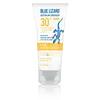What's inside
What's inside
 Key Ingredients
Key Ingredients

 Benefits
Benefits

 Concerns
Concerns

 Ingredients Side-by-side
Ingredients Side-by-side

Ethylhexyl Methoxycinnamate
UV AbsorberZinc Oxide
Cosmetic ColorantBeeswax
Emulsion StabilisingBHT
AntioxidantC12-15 Alkyl Benzoate
AntimicrobialC13-14 Isoparaffin
EmollientCaffeine
Skin ConditioningCamellia Sinensis Leaf Extract
AntimicrobialCaprylyl Glycol
EmollientChlorphenesin
AntimicrobialCyclomethicone
EmollientDimethoxydiphenylsilane/Triethoxycaprylylsilane Crosspolymer
Isostearyl Alcohol
EmollientLaureth-7
EmulsifyingLauryl PEG/PPG-18/18 Methicone
Skin ConditioningPhenoxyethanol
PreservativePolyacrylamide
Water
Skin ConditioningSodium Hyaluronate
HumectantTocopheryl Acetate
AntioxidantTriethoxycaprylylsilane
Ethylhexyl Methoxycinnamate, Zinc Oxide, Beeswax, BHT, C12-15 Alkyl Benzoate, C13-14 Isoparaffin, Caffeine, Camellia Sinensis Leaf Extract, Caprylyl Glycol, Chlorphenesin, Cyclomethicone, Dimethoxydiphenylsilane/Triethoxycaprylylsilane Crosspolymer, Isostearyl Alcohol, Laureth-7, Lauryl PEG/PPG-18/18 Methicone, Phenoxyethanol, Polyacrylamide, Water, Sodium Hyaluronate, Tocopheryl Acetate, Triethoxycaprylylsilane
Zinc Oxide 19%
Cosmetic ColorantAloe Barbadensis Leaf Juice
Skin ConditioningWater
Skin ConditioningArgania Spinosa Kernel Oil
EmollientButyrospermum Parkii Butter
Skin ConditioningCalendula Officinalis Extract
Skin ConditioningCaprylic/Capric Triglyceride
MaskingCaprylyl/Capryl Glucoside
CleansingCaprylyl Glycol
EmollientCaryodendron Orinocense Seed Oil
EmollientChamomilla Recutita Extract
Skin ConditioningGlycerin
HumectantGlyceryl Stearate
EmollientHelianthus Annuus Flower
Skin ConditioningHexylene Glycol
EmulsifyingHippophae Rhamnoides Oil
EmollientHydroxyethylcellulose
Emulsion StabilisingNasturtium Officinale Extract
PerfumingPolyhydroxystearic Acid
EmulsifyingPotassium Sorbate
PreservativePueraria Lobata Root Extract
HumectantRosa Canina Fruit Oil
EmollientRosmarinus Officinalis Extract
AntimicrobialSodium Bicarbonate
AbrasiveSpiraea Ulmaria Extract
AstringentStearic Acid
CleansingXanthan Gum
EmulsifyingPropanediol
SolventZinc Oxide 19%, Aloe Barbadensis Leaf Juice, Water, Argania Spinosa Kernel Oil, Butyrospermum Parkii Butter, Calendula Officinalis Extract, Caprylic/Capric Triglyceride, Caprylyl/Capryl Glucoside, Caprylyl Glycol, Caryodendron Orinocense Seed Oil, Chamomilla Recutita Extract, Glycerin, Glyceryl Stearate, Helianthus Annuus Flower, Hexylene Glycol, Hippophae Rhamnoides Oil, Hydroxyethylcellulose, Nasturtium Officinale Extract, Polyhydroxystearic Acid, Potassium Sorbate, Pueraria Lobata Root Extract, Rosa Canina Fruit Oil, Rosmarinus Officinalis Extract, Sodium Bicarbonate, Spiraea Ulmaria Extract, Stearic Acid, Xanthan Gum, Propanediol
 Reviews
Reviews

Ingredients Explained
These ingredients are found in both products.
Ingredients higher up in an ingredient list are typically present in a larger amount.
Caprylyl Glycol is a humectant and emollient, meaning it attracts and preserves moisture.
It is a common ingredient in many products, especially those designed to hydrate skin. The primary benefits are retaining moisture, skin softening, and promoting a healthy skin barrier.
Though Caprylyl Glycol is an alcohol derived from fatty acids, it is not the kind that can dry out skin.
This ingredient is also used as a preservative to extend the life of products. It has slight antimicrobial properties.
Learn more about Caprylyl GlycolWater. It's the most common cosmetic ingredient of all. You'll usually see it at the top of ingredient lists, meaning that it makes up the largest part of the product.
So why is it so popular? Water most often acts as a solvent - this means that it helps dissolve other ingredients into the formulation.
You'll also recognize water as that liquid we all need to stay alive. If you see this, drink a glass of water. Stay hydrated!
Learn more about WaterZinc Oxide is a mineral broad-spectrum UV filter; it is the broadest UVA and UVB reflector approved by the FDA. It also has skin protectant and skin soothing properties.
Zinc oxide is one of the most effective broad-spectrum UV filters. It protects against UVB, UVAII, and UVAI. In comparison to its counterpart titanium dioxide, zinc oxide provides uniform and extended UVA protection.
Another great benefit? This ingredient is highly photostable so it won't degrade easily under sunlight.
A common myth is that mineral UV filters are widely believed to primarily reflect UV light.
However, modern research shows titanium dioxide absorbs UV radiation like chemical filters (~95% absorption & 5% reflection).
Zinc oxide has great skin soothing properties so you'll likely find this in sunscreens formulated for sensitive skin or babies/children. It is unlikely to cause "eye sting" like other sunscreen ingredients.
Regulatory agencies consider zinc oxide to be non-toxic and safe. It has also been shown to not penetrate the skin.
Unfortunately, this ingredient does leave a visible white cast. This is why mineral sunscreens are often less cosmetically elegant than chemical or hybrid ones.
In cosmetics, zinc oxide can be found in both non-nano and nano-sized forms. The nano version is used to reduce white cast and improve the texture of sunscreen formulas.
There are ongoing concerns surrounding nano-zinc oxide's impact on marine ecosystems and whether it can be absorbed into skin.
Regarding marine ecosystems and coral reefs, there is no conclusive evidence that any form of zinc oxide (or any other sunscreen ingredients) will cause harm. The science is still developing but many consumers are keeping a close eye on this issue.
Please note, many destinations have reef-safety sunscreen rules. For instance, the U.S. Virgin Islands advises all visitors to use non-nano mineral sunscreens.
There has also been some stir about whether micronized or nano zinc oxide has potential photoxicity and absorption through the skin/lungs.
An in-vitro (done in a test tube or petri dish) study demonstrated micronized zinc oxide to have potential phototoxicity. There's no need to fret; the EU Commission's Scientific Committee on Consumer Safety has stated, "The relevance of these findings needs to be clarified by appropriate investigations in vivo." Or in other words, further studies done on living organisms are needed to prove this.
Current research shows zinc oxide nanoparticles do not penetrate intact or sunburned skin. They either remain on the surface or in the outermost layer of dead skin (stratum corneum).
Zinc oxide is one of only two classified mineral UV filters with titanium dioxide being the other one.
Fun fact: Zinc has been used throughout history as an ingredient in paint and medicine. An Indian text from 500BC is believed to list zinc oxide as a salve for open wound. The Ancient Greek physician Dioscorides has also mentioned the use of zinc as an ointment in 1AD.
Learn more about Zinc Oxide